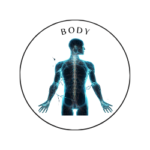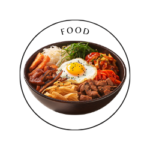 Mind
Mind
- Digital and Modern Well-being
- Mental Health and Emotional Well-being
- Mind-Body Connection and Holistic Health
- Parenting and Family
- Personal Growth and Development
- Relationships and Social Well-being
- Stress and Relaxation
- Therapeutic and Creative Practices
- Trauma and Recovery
- Work, Productivity, and Discipline
 Body
Body
 Fitness
Fitness
 Food
Food
 Beauty
Beauty
How to Spot Nutrition Myths and Misinformation

How to Spot Nutrition Myths and Misinformation
Have you ever wondered why one day eggs are the villain in your diet and the next, they’re a superfood? It seems like every time we scroll through our news feeds, there’s a new report telling us what we should – and shouldn’t – eat. Welcome to the whirlwind world of nutrition advice, where separating fact from fiction feels like an Olympic sport!
Why This Matters
In an era where everyone from celebrities to influencers throws their hat into the nutrition advice ring, understanding how to sift through this sea of information is crucial. Not only can believing myths affect your health, but it could also lead you to waste time and money on ineffective or unnecessary “superfoods” or supplements.
Unraveling Nutrition Myths
Let’s dive deep and de-mystify the world of dietary advice. Here’s how you can become a savvy, myth-busting nutrition detective.
1. Check the Source
A crucial first step in spotting a nutrition myth is checking where the information comes from. Is it a reputable health site, a peer-reviewed journal, or an anonymous blog? Trustworthy sources often have certain attributes:
– Credentials of the author (such as registered dietitians, medical doctors, or nutrition scientists)
– Citations of scientific studies
– Reviews by other experts in the field
– Institutions or organizations well-known for research and credibility in health
Visual Cue: A quick infographic detailing how to evaluate a source might help.
2. Beware of Quick Fixes
Be skeptical of diets or products that promise quick fixes. Authentic nutrition advice generally advocates for balanced eating and gradual lifestyle changes, not instantaneous solutions. Remember, if it sounds too good to be true, it probably is!
3. Understand Nutritional Balance
Nutrition is all about balance. Be cautious of advice that demonizes a specific food group or nutrient. Most diets should include a variety of foods, providing carbohydrates, proteins, fats, vitamins, and minerals.
4. Look for Consensus
Legitimate nutritional science tends to be consistent. Jumping on a bandwagon based solely on a single study can be misleading. It’s the overall trend in research that will give you the best information.
Interactive Element: A timeline slider showing how scientific consensus on a food item like fats has evolved could be illustrative.
5. Consider the Motive
Always ask why. Who is telling you that you need to take this supplement or buy that health food product? If there’s a sales goal, be wary. Nutrition advice should be unbiased and aimed at benefiting your health, not someone’s wallet.
6. Stay Away from Anecdotal Evidence
Just because something works for one person doesn’t mean it will work for everyone. Nutritional advice should be based on broad and well-conducted studies, not individual success stories.
Practical Tips:
– Use Apps for Checking Credibility: Tools like Medscape or Health News Review can help you vet the credibility of health information.
– Educational Reading: Books like “The Bad Food Bible” by Aaron Carroll or “In Defense of Food” by Michael Pollan offer great insights into how to approach diet and nutrition myths.
Conclusion: Your Path to Nutritional Savvy
Navigating the complex world of nutrition doesn’t have to be overwhelming. By using these tips, you can start to separate fact from fiction and make informed decisions about your diet. Keep questioning, keep learning, and remember that the best diet is one that is balanced and suited to your individual needs.
Call to Action: Want to dive deeper? Consider subscribing to newsletters from established nutrition science sources such as the Harvard School of Public Health or the Nutrition Source portal. They offer a wealth of resources that can keep you updated and informed. Eat wisely!
With an engaging mix of detailed insights and practical advice, remember that the journey to understanding nutrition better is a marathon, not a sprint. Keep your curiosity alive, and your health will thank you.
